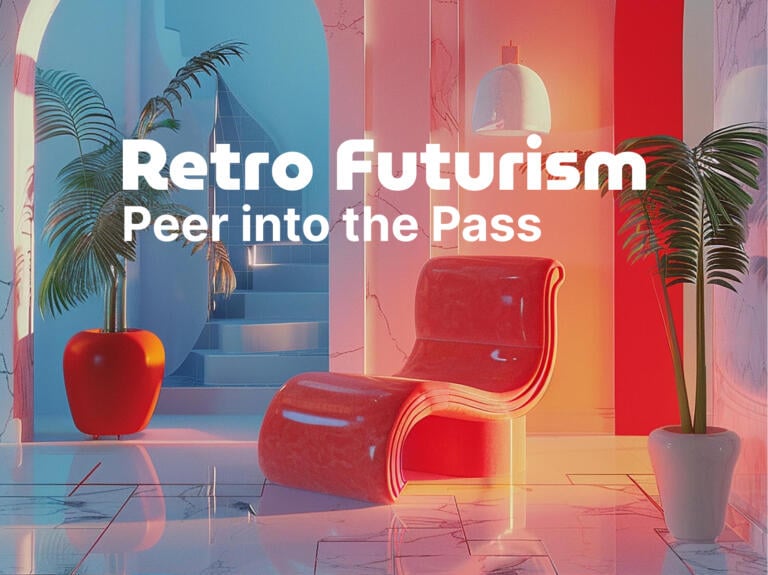Ever feel like your home looks… just like everyone else’s? You’re not alone. We all want a space that’s exciting, different, and actually says something about who we are. That’s where retro futurism interior design steps in — it’s bold, emotional, and totally unforgettable.
Imagine walking into a room that feels like a time machine—mixing the charm of the past with the thrill of the future. We’re talking vintage colors, curved furniture, neon lights, and space-age shapes that make your space feel alive. Whether you’re into classic vibes or cutting-edge flair, this style gives you both in one gorgeous blend.
In this guide, we’re diving deep into how you can bring this jaw-dropping aesthetic into your home. From layout tricks to furniture picks, we’ll show you how to make your room look like it came straight out of your wildest (and coolest) dreams. Ready to build your future with a retro twist? Let’s go.
What is Retro Futurism in Interior Design?
Retro Futurism in interior design is where yesterday’s imagination of the future comes to life. It’s a bold, nostalgic design trend that blends mid-century aesthetics with sci-fi-inspired elements. Think Jetsons meets art deco, with a touch of space-race drama and neon glow.
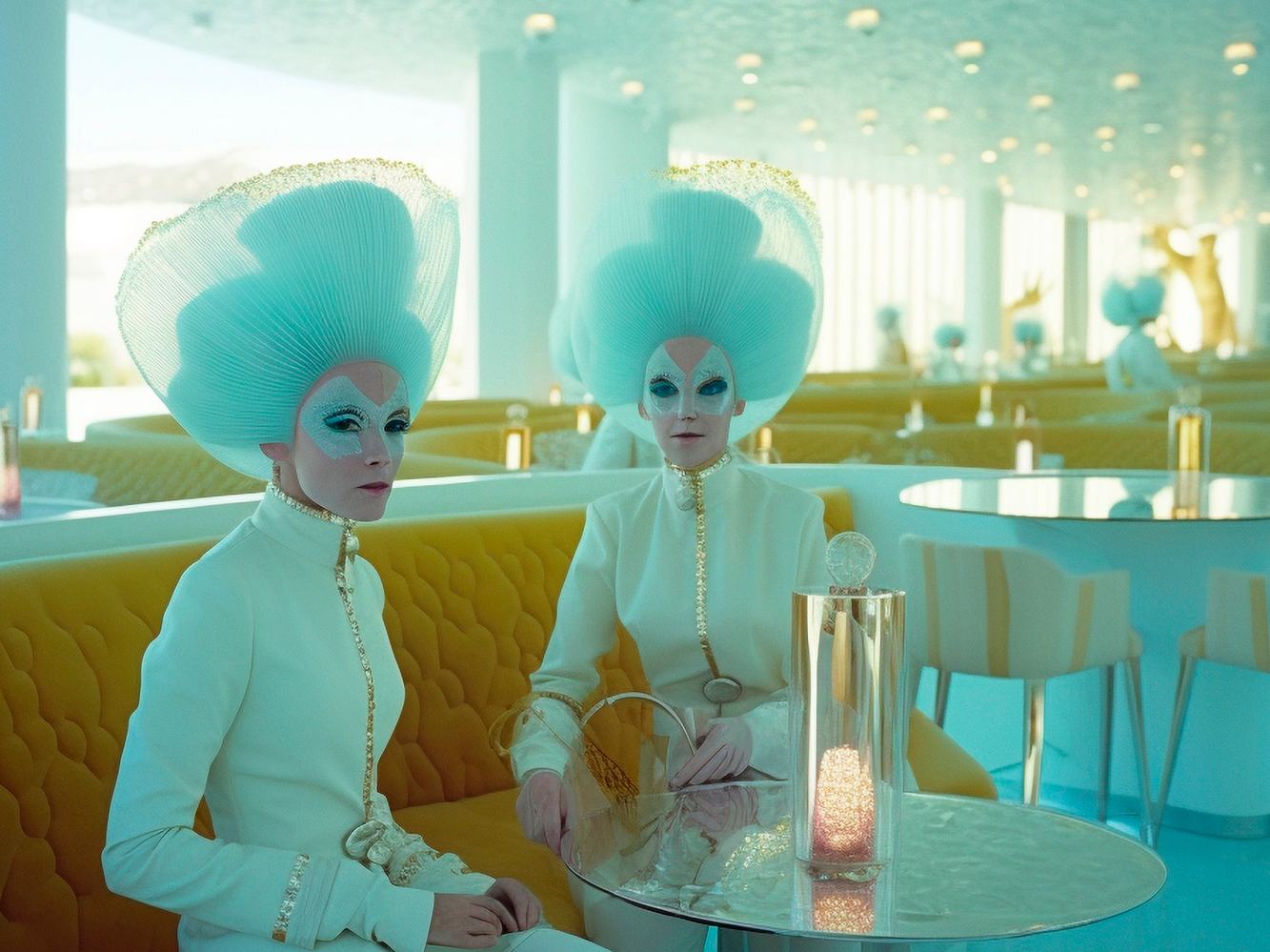
This style isn’t about staying safe—it’s about standing out. You’ll see curvy silhouettes, metallic finishes, glossy surfaces, and pops of bold color. It’s a visual time warp that feels both comforting and electrifying. Imagine stepping into a living room that looks like a vintage spaceship lounge, or a kitchen with rounded edges, chrome accents, and lighting that belongs in a galaxy far, far away.
At its core, retro futurism celebrates optimism. Retro futurism evokes a period when individuals had lofty aspirations for the future, including flying cars, robot butlers, and life on Mars. Now, that dream becomes your home. It’s a style for anyone who loves the past but dares to live in the future.
A Look Back: The History Behind Retro Futurism Design
Now that you’ve seen how retro futurism interior design blends bold colors and space-age vibes, let’s rewind. Where did it all begin? The answer lies in the wild dreams of the 20th century—when people didn’t just hope for the future, they designed it.
Back in the 1940s to 1960s, retro futurism was more than a style—it was a movement. Inspired by the space race, atomic age, and the rise of sci-fi films, designers and artists began creating visuals that imagined what life in the year 2000 and beyond would look like. Homes with round TVs, bubble chairs, floating furniture, and moon-like color palettes became symbols of innovation and wonder.
This futuristic fantasy faded in the late 20th century, but it never died. Instead, it went underground—living in vintage movie sets, retro diners, and niche design communities. Today, it’s back with a vengeance. Why? Because we’re once again dreaming big—and craving designs that spark joy, escape the ordinary, and make home feel like a cinematic experience.
What Are the Elements of Retro Futurism?
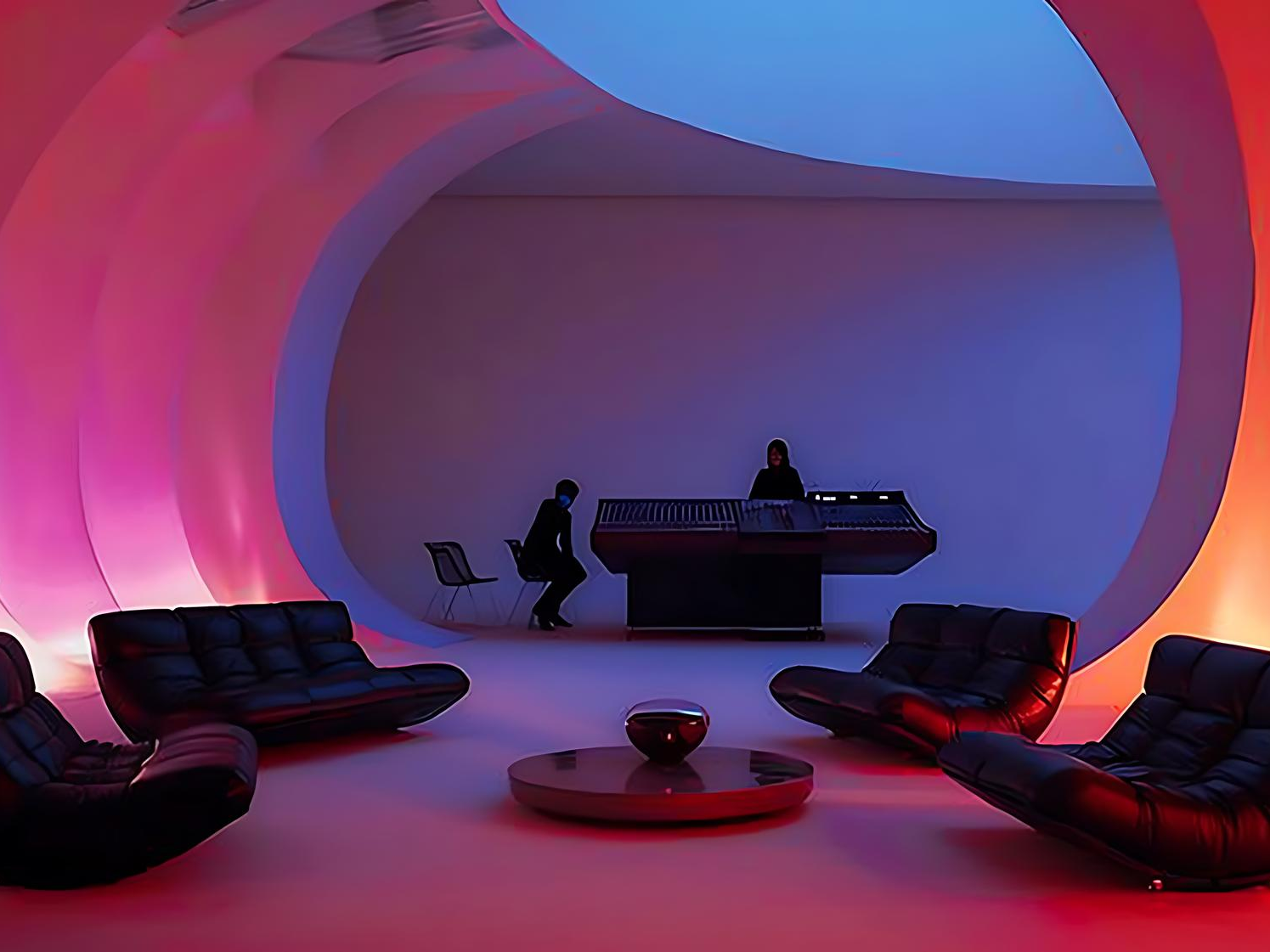
Retro futurism in interior design is a captivating blend of nostalgic mid-century aesthetics and futuristic innovation. This unique style relies on specific elements that make it instantly recognizable, transforming spaces into imaginative environments. Here are the core elements of retro futurism:
1. Streamlined and Curved Furniture
Retro futurism is synonymous with sleek, aerodynamic furniture featuring curved lines and minimal ornamentation. Inspired by Space Age design, iconic pieces like egg chairs, tulip tables, and bubble chairs embody the futuristic dreams of the mid-20th century. These forms provide both visual interest and comfort while evoking a sense of movement and progress.
2. Metallic and Chrome Finishes
Reflective surfaces play a crucial role in retro futurism. Metallic accents—especially chrome and polished aluminum—are found in table bases, lighting fixtures, and decorative details. These finishes enhance the futuristic vibe by creating a clean, high-tech look reminiscent of spacecraft interiors.
3. Bold and Playful Color Palettes
Retro futurism embraces vibrant hues like teal, mustard yellow, bright orange, and avocado green, often paired with neutrals like white, gray, or black. These color combinations evoke the optimism and energy of the Space Age. Accent walls, furniture, and decor items in these shades add character and depth to the space.
4. Innovative Lighting Designs
Lighting is more than just functional in retro futurism—it’s a statement. Sputnik chandeliers, globe pendants, and neon light strips create a futuristic ambiance while referencing the era’s fascination with space exploration. LED lighting can also be integrated to add a modern touch while maintaining the retro aesthetic.
5. Geometric Patterns and Shapes
Bold geometric designs in wallpapers, rugs, and cushions are a staple of retro futurism. Circular motifs, starbursts, and atomic patterns pay homage to mid-century design while emphasizing futuristic aspirations. These patterns add visual energy and structure to interiors.
6. Blending Old with New
A hallmark of retro futurism is its ability to seamlessly combine vintage elements with modern innovations. For example, a mid-century-inspired chair might feature built-in USB ports, or a vintage console table may house hidden smart storage solutions. This juxtaposition keeps the design fresh and practical.
7. Textures and Materials
Plush velvets, glossy plastics, and soft leathers are commonly used to balance hard, metallic surfaces. These textures add warmth and comfort to the otherwise sleek and futuristic style. Glass and acrylic are also frequently featured for their light, transparent quality.
8. Optimistic Design Themes
Retro futurism celebrates a hopeful vision of the future. Decor often includes art and accessories inspired by space travel, robots, or futuristic cityscapes. These elements make the space feel imaginative and forward-looking.
Why Retro Futurism Interior Design Is Trending
Retro futurism appeals to those looking for unique, imaginative spaces that stand out from the crowd. It’s a celebration of optimism, creativity, and innovation, offering a refreshing alternative to minimalism and traditional styles. By embracing both the past and the future, retro futurism feels nostalgic yet forward-thinking.
Why Choose Retro Futurism for Your Space?
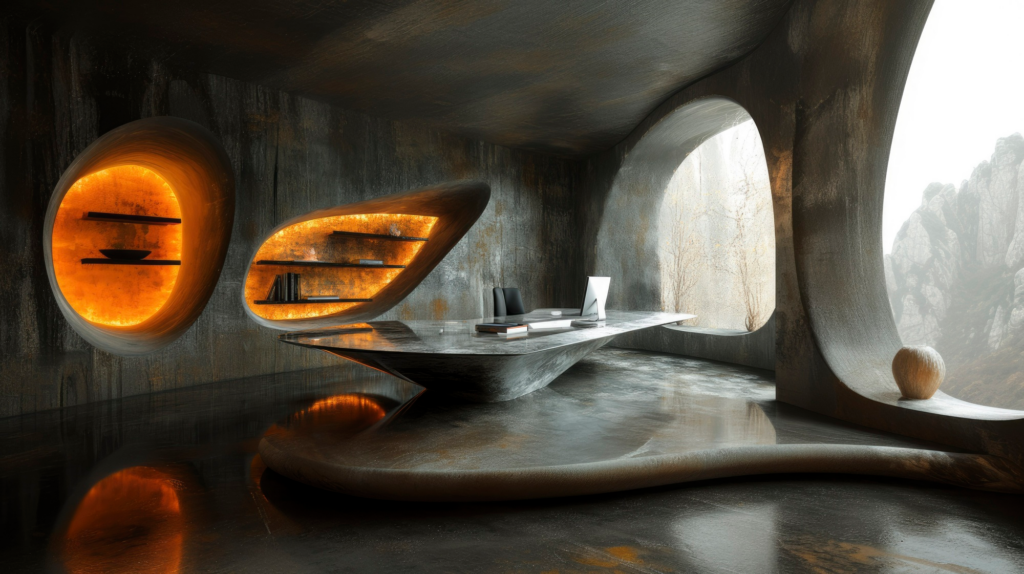
Retro futurism offers more than just aesthetics—it’s a celebration of creativity and innovation. This style is perfect for those who want a home that feels unique and full of character. It bridges the gap between nostalgia and forward-thinking, creating spaces that are as visually captivating as they are functional.
How to Incorporate Retro Futurism into Your Home
- Start with Statement Furniture
Invest in key pieces like a sleek, chrome-accented coffee table or a bold, retro-inspired sofa. These anchor the space and set the tone. - Play with Color and Texture
Layer bold colors with plush fabrics like velvet and leather. Add geometric patterns and metallic finishes for depth. - Add Futuristic Lighting
Incorporate eye-catching lighting fixtures, such as orb pendant lights or neon strips, to enhance the futuristic vibe. - Blend Technology Seamlessly
Use smart devices and concealed tech to ensure your space feels modern while maintaining the retro aesthetic.
Find Retro Futurism in What You’re Familiar with
Retro futurism is rooted in the idea of envisioning what’s ahead—introducing concepts, aesthetics, and innovations that feel ahead of their time. Interestingly, some of the most celebrated design movements in history, such as Modernist, Mid-Century, and Danish design, embody this philosophy. These styles were, in essence, retro futuristic during their eras, as they redefined what living spaces could look and feel like.
Modernist design, emerging in the early 20th century, broke away from tradition by embracing simplicity, functionality, and industrial materials. Designers like Le Corbusier and Ludwig Mies van der Rohe introduced steel, glass, and concrete in ways that were previously unimaginable. Their work envisioned a harmonious relationship between technology and architecture, setting the stage for the clean, streamlined aesthetics of retro futurism.
Similarly, the Mid-Century Modern movement captured the technological optimism of the post-war era. Inspired by space exploration and innovation, its furniture and interiors featured organic shapes, vibrant colors, and revolutionary materials like molded plywood and fiberglass. Iconic pieces such as the Eames Lounge Chair and Saarinen’s Tulip Table evoked the sleekness of rockets and spacecrafts, mirroring humanity’s fascination with the future.
Danish Modern design, part of the broader Scandinavian movement, also embraced forward-thinking ideals. Its ergonomic furniture, crafted with bentwood and organic forms, prioritized simplicity and comfort. Designers like Hans Wegner and Arne Jacobsen pushed the boundaries of traditional woodworking, creating timeless pieces that harmonized beauty and functionality.
Each of these movements shares the retro futuristic vision: reimagining the future with groundbreaking designs that combine innovation with practicality. Though they now carry the weight of history, their timeless appeal reminds us that the future is not just about technological advances—it’s also about creating spaces that inspire, elevate, and endure.
Furniture Choices for a Retro Futurism Interior
Just to help you visualize things further, here are some pieces that are included in this theme. Here are some retro futuristic icons that we think are worth looking into!
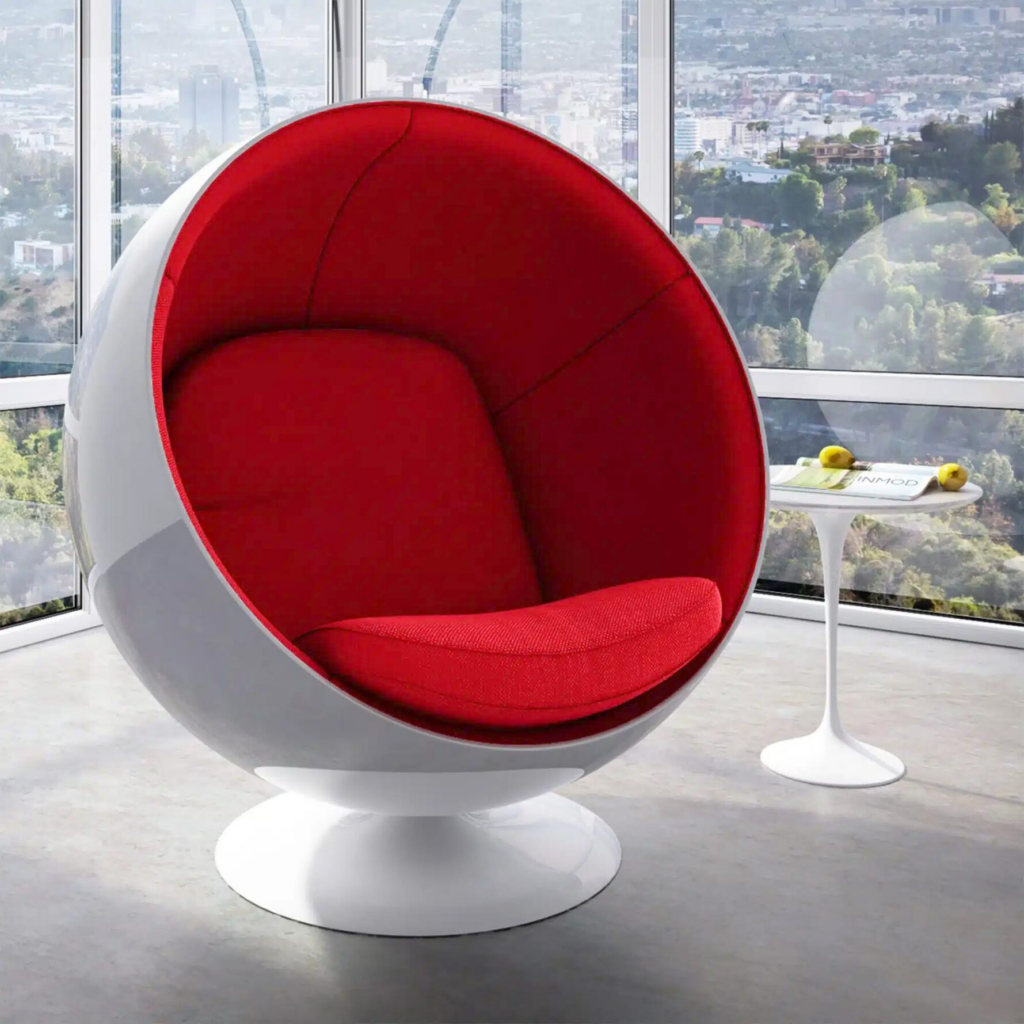
The Ball Chair Replica encapsulates the spirit of retro futurism with its space-age design and immersive seating experience. Designed in 1963 by Eero Aarnio, this avant-garde piece breaks traditional boundaries, resembling a floating orb straight out of a sci-fi classic. The sleek fiberglass shell paired with cushioned interiors creates a private, cocoon-like retreat while offering bold visual impact. Its clean lines and futuristic silhouette make it the perfect addition to any space that embraces forward-thinking design. Ideal for living rooms or modern lounges, the Ball Chair brings a retro futuristic vibe that’s both functional and statement-making.

The Platner Dining Table Replica seamlessly blends retro futuristic aesthetics with timeless elegance. Originally designed by Warren Platner in 1966, its sculptural wire base mirrors the optimism of mid-20th-century modernism. Crafted with polished stainless steel rods and topped with tempered glass, this dining table exudes sophistication while maintaining a light, airy feel. Its innovative design, which combines structure and ornament, is perfect for interiors inspired by retro futurism. Whether used as a focal point in your dining area or a modern centerpiece, the Platner Table delivers a sleek, forward-looking design with a touch of vintage charm.
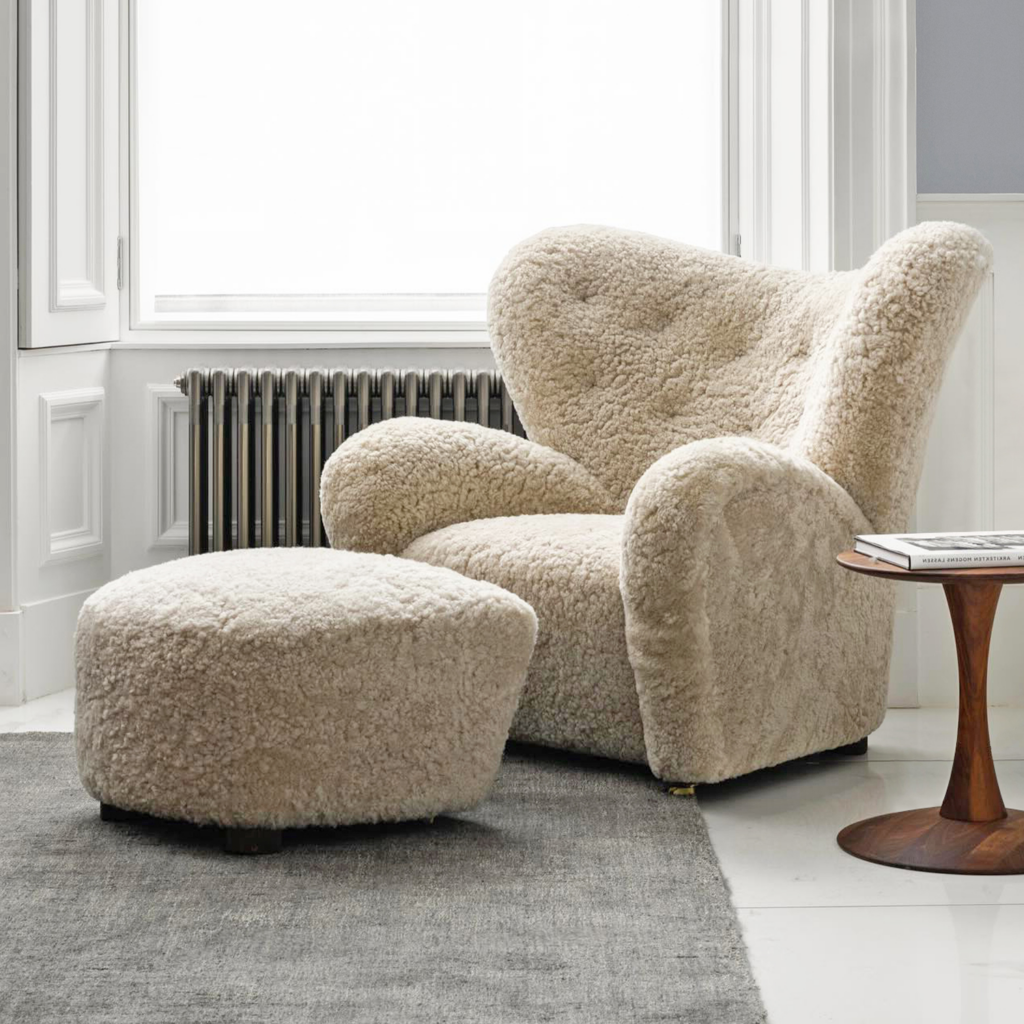
The Tired Man Lounge Chair and Ottoman Replica reimagines relaxation with a retro futuristic twist. Originally designed by Flemming Lassen in 1935, this chair’s oversized silhouette and plush upholstery feel simultaneously nostalgic and ahead of its time. Its cloud-like softness and curved form invite unparalleled comfort, while the sculptural design evokes the innovative spirit of retro futurism. Perfect for modern living rooms, reading nooks, or cozy corners, this chair adds an element of bold design to any space. Paired with its ottoman, it creates an oasis of style and comfort that aligns with both past and future design ideals.
Retro Futurism’s Timeless Appeal
Retro futurism in interior design captures the essence of dreaming big. By blending the optimism of the past with the possibilities of the future, it offers a style that feels both grounded and visionary. Whether you’re drawn to the sleek metallic finishes, bold furniture designs, or the dynamic interplay of color and texture, retro futurism has something for everyone. Transform your home into a space where nostalgia and innovation coexist beautifully.
